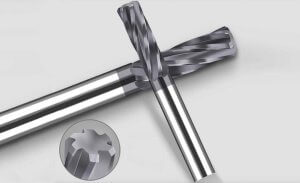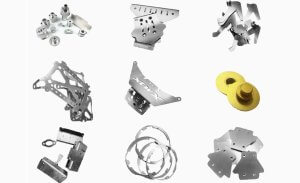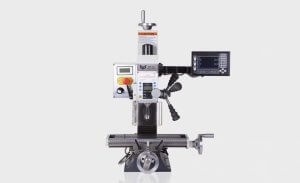Understanding CNC Machining and Titanium Grades
CNC (Computer Numerical Control) machining is a fundamental manufacturing process in many industries. It utilizes automated controls and cutting tools to remove material from a workpiece, shaping desired components accurately and efficiently. One must carefully select the material for this process based on its properties and required application. Among various materials, titanium proves majorly popular due to its high strength-to-weight ratio, excellent corrosion resistance, and impressive biocompatibility.
Intriguingly, there are different grades of titanium, with Grade 5 and Grade 23 being noteworthy ones. Grade 5, also known as Ti-6Al-4V, is an alpha-beta alloy renowned for its great mechanical properties. Conversely, Grade 23 or Ti-6Al-4V ELI (Extra Low Interstitial), touted for its superior damage tolerance, is predominantly utilised in biomedical applications. Why we draw a comparison between these two titanium grades? Therein lies our purpose – to weave distinctions regarding their characteristics and respective applications, thereby assisting individuals make informed decisions in selecting suitable titanium grade for various CNC machining projects.
Understanding Titanium Alloys
Titanium alloys are effectively a blend of titanium and other chemical elements. These alloys possess exceptional strength-to-weight ratio, which when combined with their outstanding corrosion resistance capabilities make them ideal for several applications in different industries such as aerospace, medical, marine, and manufacturing among others. Particularly noteworthy, is the importance of these alloys in CNC machining where they offer enhanced durability, longevity, and performance aspects to machined parts.
In terms of variety, there are numerous grades of titanium available, each exhibiting unique attributes tailored towards specific applications. While it’s unnecessary to delve deeply into specifics at this point, it is crucial recognizing that properties like tensile strength, thermal stability or malleability largely differ across the various titanium grades – hence influencing application choices. For instance, comparing grade 5 and grade 23 titanium reveals substantial variances, affecting application suitability by virtue of the distinguishing characteristics inherent in each alloy type.
In-depth Analysis of Titanium Grade 5
Titanium Grade 5, also known as Ti-6Al-4V, is a widely used titanium alloy due to its excellent strength, corrosion resistance, and biocompatibility. It is commonly used in aerospace, medical implants, marine components, and automotive applications. The alloy’s high strength-to-weight ratio and heat resistance make it a preferred choice for precision machining in demanding industries.
Assessment of Titanium Grade 23
The distinguishing characteristics of Titanium Grade 23 reflect its prominent place in the realm of manufacturing. This grade of titanium is favored for its exceptional strength-to-weight ratio, remarkable corrosion resistance, and impressive biocompatibility. These properties make it well-suited for high-performance components like aerospace fasteners and even medical devices.
- Detailed Analysis: The strength of Titanium Grade 23 comes from meticulously controlled amounts of iron, oxygen, nitrogen, hydrogen, and other interstitial elements. In contrast to other grades, this grade has improved ductility, formability, and fracture toughness due to its reduced levels of oxygen and iron. Its superior strength and reduction characteristics facilitate unique cold-die forming capabilities that are not achievable with other materials.
- Applications: Typically, Titanium Grade 23 is used in critical applications demanding high strength, low weight, and excellent durability. Often found in jet engines, airframes, and spacecraft, where dependability under extreme conditions is paramount. Beyond aerospace, it also serves a vital role in the medical industry, particularly for implants and surgical tools, due to its commendable biocompatibility, resistance to bodily fluids and chemicals, and ability to promote osseointegration (the bonding of bone to the implant surface).
Comparing and Contrasting Titanium Grade 5 and Grade 23: Strength, Flexibility, Corrosion Resistance and Usage Decisions
In the sphere of CNC Machining, an understanding of material properties is indispensable. Two materials frequently utilized are Titanium Grade 5 and Grade 23. Commencing with their direct comparison,Titanium Grade 5, also known as Ti6Al4V, exhibits superior strength and toughness when juxtaposed against Grade 23. Nevertheless, Grade 23, or Ti-6AL-4V ELI offers enhanced ductility and fracture toughness, making it more suitable for intricate applications requiring high levels of manipulation during creation. In terms of corrosion resistance, both these grades have commendable performance.
The decision on usage of either grade relies heavily on these differences. For instance, in industries where strength is paramount such as aerospace and automotive, the robustness of titanium grade 5 makes it the preferred choice. Conversely, medical implants which require an amalgam of strength, flexibility and biocompatibility employ grade 23.
Pros and Cons of Using Grade 5 vs. Grade 23 for CNC Machining
In the world of CNC machining, understanding materials is essential in making sound decisions. Particularly, when comparing Titanium Grade 5 and Grade 23, several differences come to light.
Advantages and Limitations of Grade 5
Titanium Grade 5, or Ti-6Al-4V, known for its durability and strength, holds up well under high stress situations. It’s commonly used in aerospace applications due to its excellent fatigue resistance. However, this alloy has some limitations in weldability and formability, which makes it less suitable for complex shapes.
Benefits and Drawbacks of Grade 23
Titanium Grade 23, on the other hand, offers superior corrosion resistance, making it ideal for medical implants. Notably, its enhanced ductility improves its usability in more intricate designs. Still, while being more biocompatible and easier to process than grade 5, it can’t match the former’s high strength to weight ratio, thus making it a less optimal choice in heavy-duty circumstances like aircraft structure components.
- Example: A gear wheel that must withstand considerable load and operate without failure would typically be machined from Grade 5 titanium, due to its high strength properties. Conversely, dental implants necessarily favor the use of Grade 23 Titanium because of its resilience against body fluids and improved formability.
Real-World Applications of Titanium Grade 5 and Grade 23
Titanium Grade 5 is widely used in several industries due to its superior strength, light weight, and corrosion resistance. Specifically, it’s commonly utilized in the aerospace industry for components like turbine blades and structural parts, as well as in marine applications such as propellers and hulls where its corrosion-resistance properties prove critical. Moreover, on account of its biocompatibility, this grade sees frequent use in medical device manufacturing—particularly in orthopedic implants. On the other hand, instances when Grade 23 is chosen over other grades often come down to higher purity, finer microstructure, and improved mechanical properties at elevated temperatures. These attributes make it a preferred choice mainly in chemical processing and biomedical fields—for equipment exposed to harsh conditions or sensitive surgical tools, for instance.
- Aerospace Industry: Application includes components like turbine blades and structural parts.
- Marine Applications: Used for manufacturing propellers and hulls due to its high corrosion resistance.
- Medical Devices: Titanium Grade 5 is employed in the making of orthopedic implants owing to its biocompatibility.
- Chemical Processing: Grade 23’s higher purity and fine microstructure makes it suitable for equipment exposed to harsh conditions.
- Biomedical Fields: It’s preferred for manufacturing sensitive surgical tools.
Conclusion
In conclusion, understanding the differences between Titanium Grade 5 and Grade 23 plays a crucial role in CNC machining operations. Recapitulating the main aspects, Grade 5 is often preferred for its higher strength characteristics while Grade 23 is chosen for its superior biocompatibility and formability. These unique attributes contribute to their use in various applications such as automotive components (Grade 5) or medical implants (Grade 23).
Upon delving into technical principles, we discovered that factors such as alloying elements and microstructure can greatly alter the material’s mechanical properties and welding capability. This differentiation aligns the suitability of each grade with specific manufacturing requirements.
Therefore, an informed decision on materials selection largely rests upon the comprehensive understanding of these grades – a fundamental aid in enhancing production efficiency and component performance. It also reaffirms the conception that there is no ‘one size fits all’ solution in material choice; rather it necessitates careful scrutiny of both operational requisites and material capabilities.
Other Articles You Might Enjoy
- Ceramic Tooling in CNC Machining: Breaking the Myths About Durability and Performance?
CNC Machining and Ceramic Tooling: Busting the Myths Computer Numerical Control (CNC) machining is an advanced method of manufacturing where pre-programmed software controls the movement of factory machinery, giving intricate…
- Innovative CNC Machining for Advanced Sporting Goods
Innovative CNC Machining for Advanced Sporting Goods CNC machining, or Computer Numerical Control machining, is a high-precision manufacturing process where pre-programmed computer software dictates the movement of factory machinery and…
- Custom CNC Machining Solutions for Brass and Stainless Steel
Introduction to Custom CNC Machining Solutions for Brass and Stainless Steel Custom CNC (Computer Numerical Control) machining is a manufacturing process that involves programmed codes directing the movement of factory…








